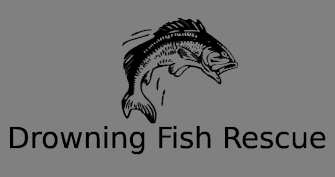
What is a Beetle Spin?
Introduced by Johnson Fishing, the Beetle Spin is a spinnerbait consisting of a small Colorado blade attached to a safety-pin-style arm, paired with a soft plastic grub or curly-tail body. The blade spins during retrieval, creating flash and vibration to attract fish, while the soft body mimics a small baitfish or insect. Available in sizes ranging from 1/32 to 1/4 ounce and various color combinations (e.g., black/chartreuse, white, or natural tones), the Beetle Spin is designed for lightweight tackle and excels in shallow to mid-depth waters.

A classic Beetle Spin with a black/chartreuse curly-tail grub and nickel blade.
Setting Up the Beetle Spin
Proper setup is critical to ensure the Beetle Spin performs as intended. Follow these steps:
- Choose the Right Gear: Pair the Beetle Spin with ultralight to light spinning tackle. A 5–6.5-foot rod with a fast action tip and a 1000–2500 series reel spooled with 4–8-pound monofilament or fluorocarbon line works best. Braided line (6–10-pound test) with a fluorocarbon leader can enhance sensitivity.
- Select the Size and Color: Use smaller sizes (1/32 or 1/16 ounce) for panfish or clear water, and larger sizes (1/8 or 1/4 ounce) for bass or murky conditions. Match colors to water clarity: bright colors like chartreuse or yellow in stained water, and natural hues like pumpkinseed or smoke in clear water.
- Attach the Lure: Tie the Beetle Spin directly to the line using a loop knot or improved clinch knot to allow free movement of the spinner arm. Avoid swivels, as they can reduce the lure’s action.
- Inspect the Body: Ensure the soft plastic body is threaded correctly onto the jighead hook, with the hook point exposed for a solid hookset. Replace worn or torn bodies to maintain lifelike action.
Retrieval Techniques
The Beetle Spin’s versatility shines through its adaptability to various retrieval methods. Here are the most effective techniques:
- Steady Retrieve: Cast the lure and reel at a consistent speed to keep the blade spinning. This mimics a fleeing baitfish and works well for active fish. Vary the speed to find what triggers strikes—faster for bass, slower for panfish.
- Stop-and-Go: Reel for a few turns, then pause to let the lure flutter down. This imitates a wounded prey and can provoke reaction strikes from bass or crappie.
- Twitch and Jig: Add occasional rod twitches or short hops during the retrieve to create erratic action. This is particularly effective in cover like grass or docks, where fish ambush prey.
- Bottom Bouncing: In deeper water (6–10 feet), let the Beetle Spin sink to the bottom, then retrieve slowly with occasional lifts to bump along the substrate, attracting bottom-oriented fish like perch.

The Beetle Spin’s blade creates flash and vibration during retrieval, attracting fish.
Target Species
The Beetle Spin is a multi-species lure, making it ideal for anglers targeting a range of freshwater fish. Key species include:
- Largemouth and Smallmouth Bass: Bass are drawn to the Beetle Spin’s flash and vibration, especially in shallow cover like weeds, docks, or fallen trees. Use 1/8 or 1/4-ounce models with curly-tail grubs in chartreuse or black.
- Crappie: Smaller Beetle Spins (1/32 or 1/16 ounce) with white or pink bodies are deadly for crappie around brush piles or submerged timber, especially in spring.
- Bluegill and Sunfish: Panfish can’t resist tiny Beetle Spins with smoke or natural-colored grubs, particularly when fished slowly near lily pads or shorelines.
- Perch and White Bass: In open water or near rocky structures, the Beetle Spin’s blade attracts schooling fish like perch and white bass, especially with a steady retrieve.
Ideal Fishing Locations
The Beetle Spin performs best in shallow to mid-depth waters (1–10 feet) with cover or structure. Prime locations include:
- Lakes and Ponds: Target weed edges, submerged logs, or docks in small lakes or community ponds. The Beetle Spin’s compact size allows it to slip through cover without snagging.
- Rivers and Streams: In slow-moving rivers or creeks, cast near undercut banks, riffles, or eddies where bass and panfish congregate. The lure’s weight helps maintain control in light currents.
- Reservoirs: Focus on shallow flats, points, or brush piles in reservoirs, especially during spring and fall when fish move to shallower water.
- Urban Waterways: Canals, retention ponds, and urban lakes are excellent for Beetle Spin fishing, offering easy access and abundant panfish and bass.
Tips for Success
To elevate your Beetle Spin game, consider these practical tips:
- Customize Bodies: Experiment with different soft plastic bodies, such as paddle-tail grubs or creature baits, to vary action and match local forage.
- Sharpen Hooks: Ensure the jighead hook is razor-sharp for better penetration, especially with light tackle and small fish.
- Use Scent: Apply attractants like Berkley Gulp! or fish oil to the soft body to entice hesitant biters in cold or clear water.
- Fish Early or Late: Low-light conditions (dawn or dusk) increase fish activity in shallow areas, making the Beetle Spin more effective.
- Avoid Overworking: Keep retrieves simple to maintain the lure’s natural action. Over-jerking can disrupt the blade’s spin.
Conclusion
The Beetle Spin’s enduring popularity stems from its simplicity, affordability, and ability to catch a wide range of freshwater fish. By mastering setup, retrieval techniques, and location selection, anglers can unlock the lure’s full potential for bass, crappie, panfish, and more. Whether you’re fishing a quiet pond, a winding river, or a sprawling reservoir, the Beetle Spin offers a reliable and exciting way to connect with fish. Grab a few in different sizes and colors, hit the water, and experience why this lure remains a timeless favorite among anglers of all skill levels.
